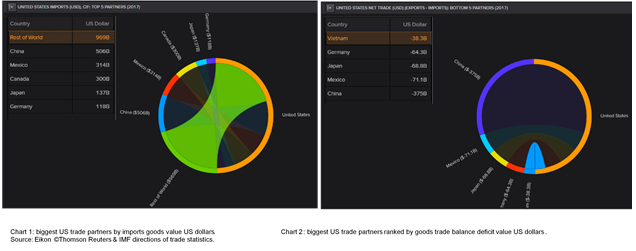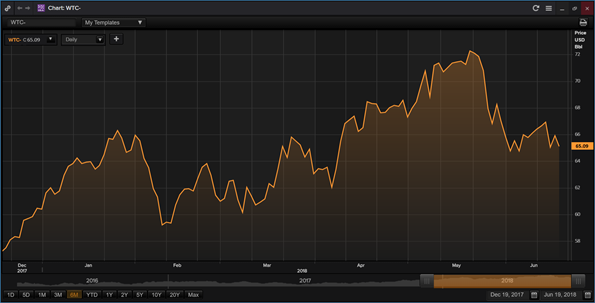The following article was written by Ramy Abouzaid, Head of Research at ATFX, UAE.

Ramy Abouzaid, ATFX
Concern over escalating tensions between the United States and China is on the verge of reaching a stage of commercial war after the White House threatened Beijing yesterday that the US president is ready to impose new tariffs on Chinese goods worth $200 billion.
This was a response from the White House following news that China would impose new tariffs of 25% on US goods worth $50 billion, done in reciprocity if the US president implements his decision to impose the first tranche of tariffs on Chinese goods worth $50 billion.
The White House trade adviser said on Tuesday the 19th of June 2018 that China has underestimated U.S. President Donald Trump’s resolve to impose more tariffs unless it changes its “predatory” trade practices.
It is clear that the campaign leader from the US administration is White House trade adviser Peter Navarro, who is well listened to by the US president.
Do oil prices benefit from these tensions?
Chart 3: WTI daily closing prices last 6 months. Source: Eikon ©Thomson Reuters.
The list of US goods that may be hit with Chinese tariffs of 25% starting from the 6th of July was announced by government sources in China and will include agricultural products targeting US farmers in the US, likely due to their support of the US president in the 2016 presidential elections. But the list may also include Chinese imports of US shale oil, which in one way or another will affect US oil producers, especially given that China is the largest customer for US crude, importing about 363,000 barrels per day in the last six months ending in March. Thomson Reuters shipping data shows those exports have increased since, rising to an expected 450,000 bpd in July.
And on the other side, in an official statement from the Chinese government which directly accused the United States of “extreme pressure and blackmailing” and vowing to retaliate, China’s Commerce Ministry said Beijing will fight back with “qualitative” and “quantitative” measures if the United States publishes an additional list of tariffs on Chinese goods.
The impact of all these developments on the financial markets was clear as Shanghai stocks plunged to two-year lows. The Dow Jones Industrial Average was down by 1.15% and gave up all its 2018 gains, while the S&P 500 dropped 0.4% by Tuesday’s close.


